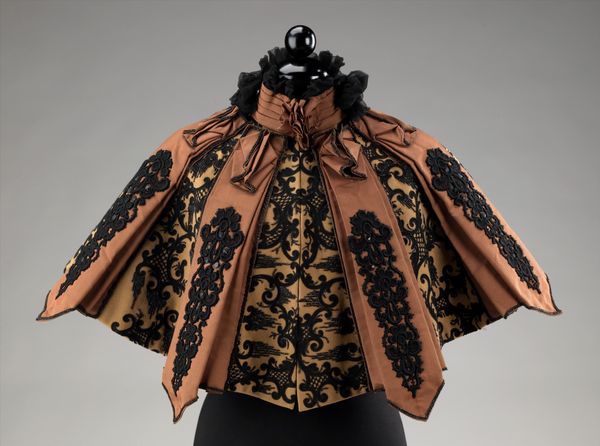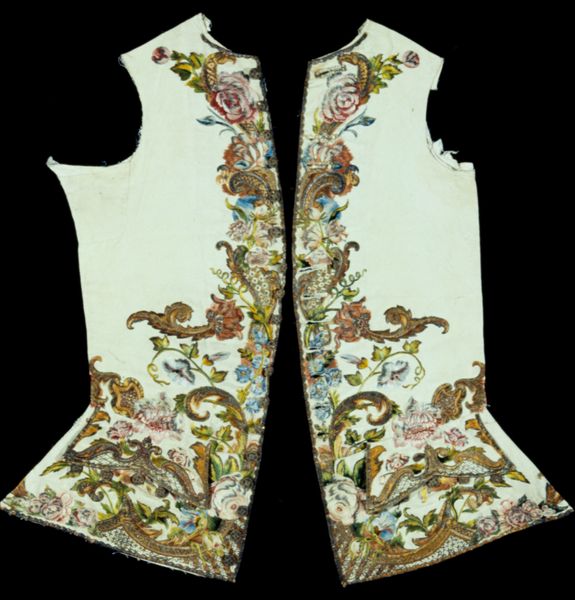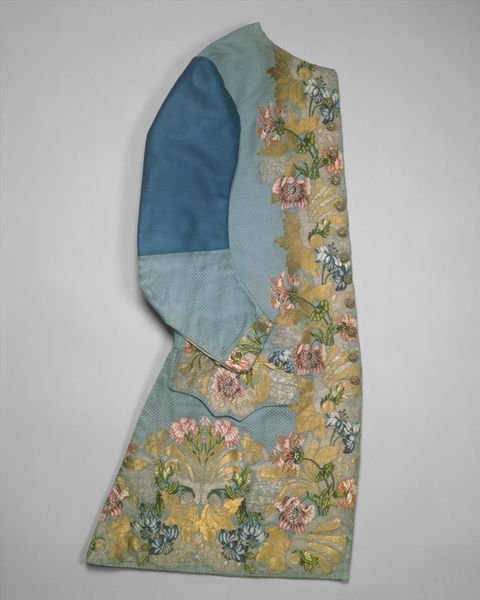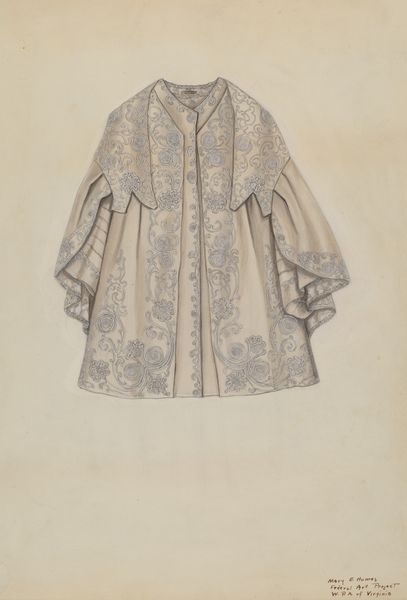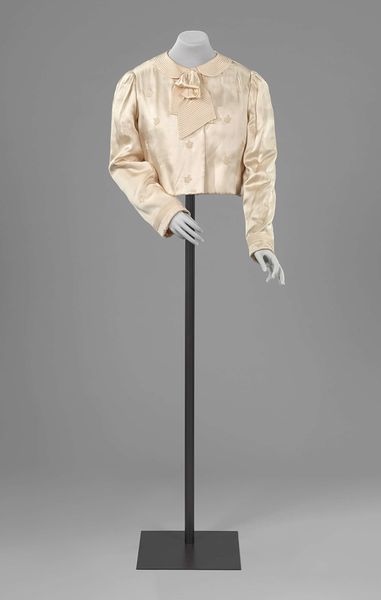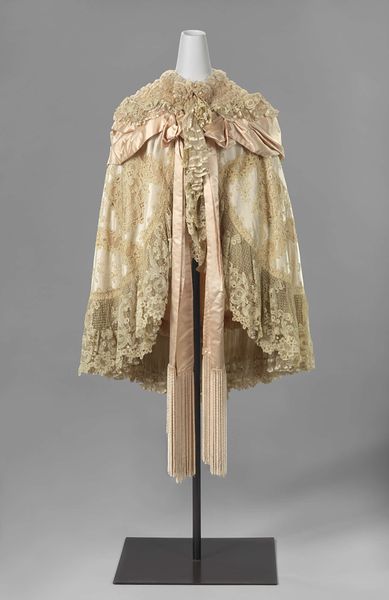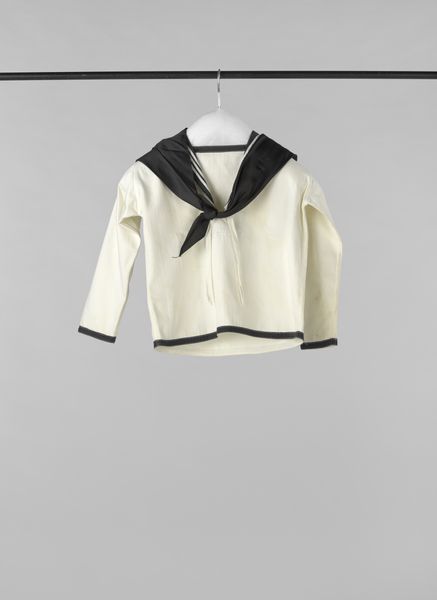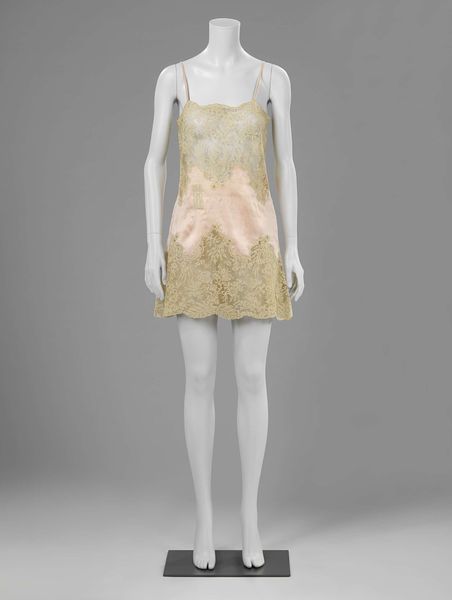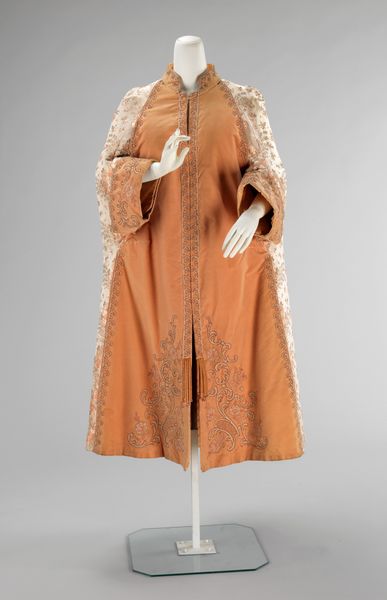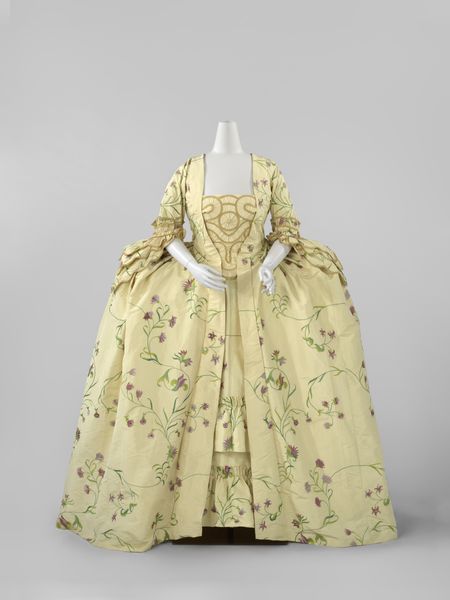
mixed-media, textile
#
fashion design
#
underwear fashion design
#
mixed-media
#
fashion mockup
#
textile
#
collage layering style
#
fashion and textile design
#
historical fashion
#
wearable design
#
romanticism
#
costume
#
clothing photo
#
decorative-art
#
fashion sketch
#
clothing design
Copyright: Public Domain
Editor: So, here we have a "Bodice," dating from between 1840 and 1860, creator unknown but part of the Metropolitan Museum of Art's collection. It's made from textile and mixed media. The overall effect is so delicate. Those ribbons just look impossibly fragile now. What leaps out at you? Curator: Ah, yes! The Bodice, more than just clothing, isn't it? It’s almost a whispered secret. Notice how the light catches on the floral pattern, playing hide and seek. Feels like a snippet from a forgotten fairytale. Makes you wonder about the woman who wore it, doesn’t it? I mean, was she as romantic as the garment suggests? Editor: I guess, but it's hard to see past the practical constraints. Those ribbons holding it together, literally holding up a standard of beauty. Was this freedom, or just an ornate cage? Curator: Both, perhaps. Aren’t we all, in a way, adorned cages? The beauty lies in the tension, in the rebellious whisper beneath the perfect silk. Look closer – the slight imperfections in the stitching, a little rebellion sewn right in! Editor: I hadn't noticed the imperfections. They really do humanize it. Curator: Exactly! It's in the flawed details that history finds its voice. The bodices of the era were pretty restrictive. It may be a romantic dream, but its constricting silhouette whispers something harsher too, maybe. That tension's why this survives beyond its time as a fashion statement to become... something else. Editor: Something more poignant. Thanks, I definitely see it differently now. Curator: As do I. Thanks to your insights too!
Comments
No comments
Be the first to comment and join the conversation on the ultimate creative platform.
